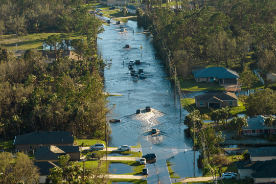Business
Supplier Data: From Estimates to Evidence Building defensible Scope 3 Category 1 baselines.

For most companies, Scope 3 emissions—those that occur across the value chain—represent the largest share of their climate footprint. Within Scope 3, Category 1: Purchased Goods and Services is often the most material yet also the most difficult to measure. Historically, many firms have relied on spend-based estimates or generic emission factors, providing a rough but weakly defensible baseline. Today, however, investors, regulators, and assurance providers are raising the bar: companies are expected to move from estimates to evidence, building robust Scope 3 Category 1 baselines grounded in supplier-specific data.
The challenge is that supply chains are vast and heterogeneous. A consumer goods company may have tens of thousands of suppliers spread across dozens of countries, each with different levels of climate maturity. Initial baselines often rely on environmentally extended input-output (EEIO) models, which map dollars spent to sector-average emissions. While useful for getting started, these methods obscure actual supplier performance and make year-on-year comparisons less meaningful. As stakeholders demand greater accountability, firms are increasingly being pushed to collect primary data directly from suppliers.
Moving toward evidence-based baselines involves a phased approach. Companies typically begin by identifying their most material suppliers—often the top 50–100 that account for the majority of spend or emissions. From there, they can request supplier-specific emissions data, encourage disclosure via platforms such as CDP, or integrate reporting requirements into procurement contracts. Over time, this allows substitution of sector averages with actual, verifiable numbers. Early adopters are also investing in digital supply-chain platforms that automate data collection, standardize formats, and track improvements year over year.
A defensible baseline also requires methodological transparency. This means disclosing the share of supplier emissions based on estimates versus primary data, the emission factors used, and the assumptions applied in gaps. Without such transparency, even sophisticated models risk being challenged by auditors or regulators. Assurance providers in particular are looking for evidence trails—documentation that links supplier data to reported figures, with clear boundaries and checks against double counting.
The benefits go beyond compliance. By obtaining higher-quality data, companies gain visibility into hotspots, enabling them to design targeted supplier engagement programs and identify cost-effective decarbonization opportunities. For example, a retailer that moves from generic emission factors to supplier-specific data may discover that a handful of packaging vendors dominate its Scope 3 footprint—allowing it to focus collaboration and innovation efforts where they matter most. In capital markets, defensible baselines also enhance credibility, reassuring investors that disclosed Scope 3 targets are not built on shaky foundations.
The transition from estimates to evidence is not easy, but it is becoming unavoidable. With regulations such as the EU’s CSRD and California’s climate disclosure laws raising expectations, companies that stick to high-level proxies will face growing reputational and compliance risks. Those that invest early in supplier engagement, data platforms, and assurance-ready processes will not only build more defensible baselines but also create competitive advantage in the race toward credible net-zero supply chains.

At least 20 people killed in Russian glide bomb attack on village in eastern Ukraine

Transition vs. Physical Risk A decision tree for which risk dominates by industry.

Getting Assurance-Ready — Controls and evidence trails for sustainability data.
trending posts

TOP Categories
Google Web Reporters












3 comments
David Bowie
3 hours agoEmily Johnson Cee
2 dayes agoLuis Diaz
September 25, 2025